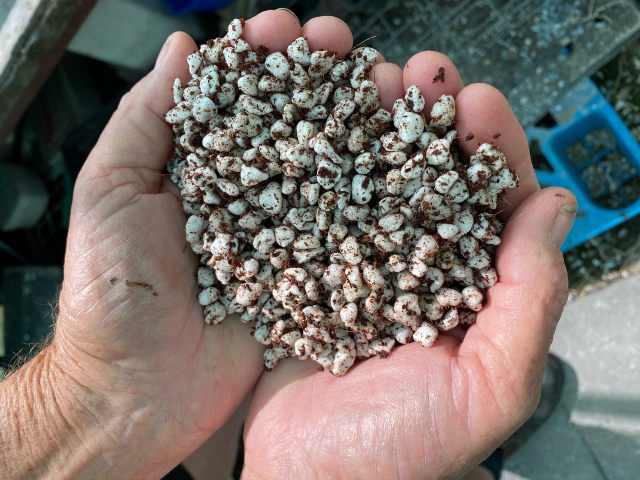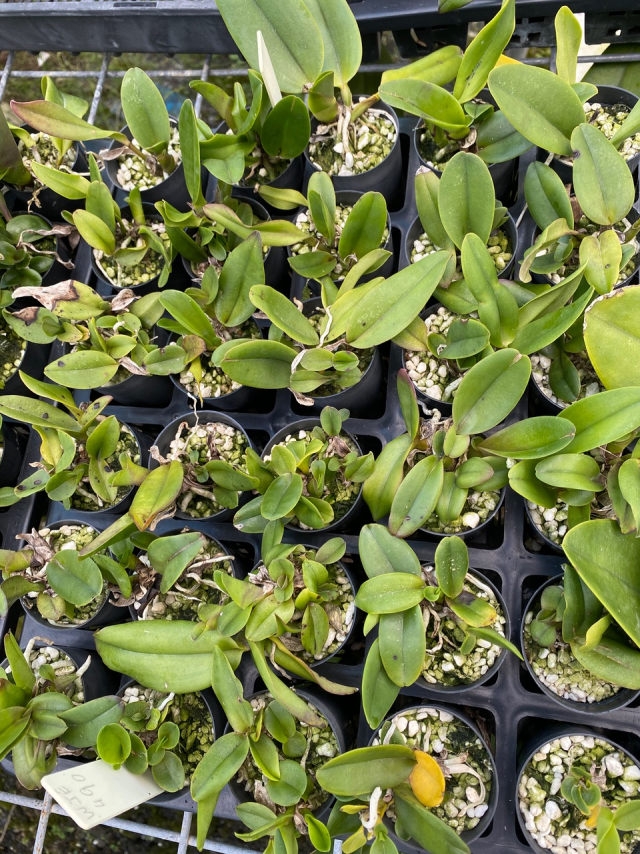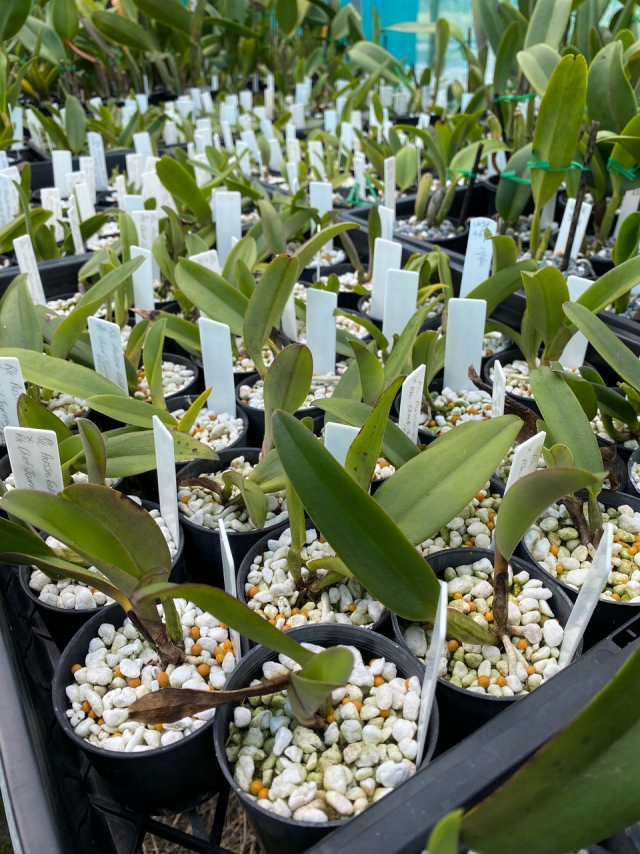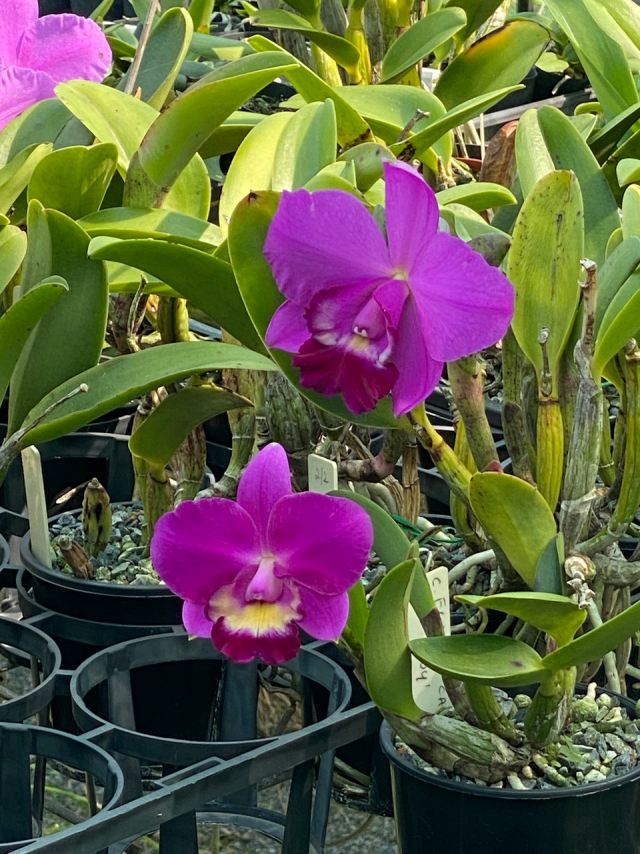Breeding and growing Cattleya orchids and the name Jim Evans go hand in hand.
We spoke to Jim about the long process of breeding Cattleya orchids. He hopes that the long process of cross-breeding orchids will result in spectacular and note-worthy flowers.
Working most days in his shade houses, Jim is assisted by Leanne Evans to tend, repot and breed thousands of orchids.
Jim has both bottle and self-set orchids.
With a toothpick, Jim transfers the pollen of one orchid to the female parts of another and then waits up to 7 months to collect the seeds from the resulting pod.
Once he has the seeds, Jim takes the seeds to a flasker, a grower who sterilises the seeds and places them in a sterilised bottle with a nutrient solution based on agar.
A dedicated flasker will use a laminar flow cabinet to ensure that the ‘mother bottle’ of seeds is completely uncontaminated.
After germination, when the little orchids are about 1cm high, the flasker moves the plants from the mother bottle to a second bottle.
The second bottle has some perlite with sphagnum moss in it.
Perlite is a type of volcanic glass that has moisture trapped inside. When it is heated, it expands to create the product we see in garden shops.
The flasker holds Jim’s baby orchids for around 18 months, then Jim grows them on in the second bottle for another 18 months.
So we’re up to nearly four years since flowering and pollination, and the process is not over yet.
Once the little orchids are planted out in tiny pots, Jim might wait five to seven years to see the first flower. It’s a long time to wait to see the results of a cross.
There are usually about 30 little plants in a bottle, and they are planted in two inch pots when they’re ready. Later, they’re potted on to 120mm to 140mm pots.
Throughout the entire process, from pollinating to bottling to repotting, durable labelling is essential.
For Jim, though, the joy of breeding can’t be better. He loves to see the different shades and patterns in each new plant.
Even amongst a batch of orchids, the flowers will be subtly different. To make a perfect replica, tissue culture would be used instead of using fertilised seeds.
Jim has chosen to concentrate on breeding and growing only Cattleya orchids but there are other popular types of orchids which will grow quite well in our region.
The orchids we see at major retailers are generally Phalaenopsis orchids. They flower two or three years after being planted out from the bottle.
Dendrobiums are perhaps best known for their Cooktown orchid (Dendrobium bigibbum).
Oncidiums are commonly known as ‘dancing ladies’ because their petals look like ruffled skirts.
Paphiopedilums are known as ‘lady slipper’ orchids, nicknamed after their pouch-like flowers which with a bit of imagination resemble ladies’ footwear.
Paphiopedilums and Phalaenopsis don’t have a water-storage organ so need constant watering.
Paphiopedilums are known as ‘moth orchids’, their flowers said to look like moths with outspread wings.











